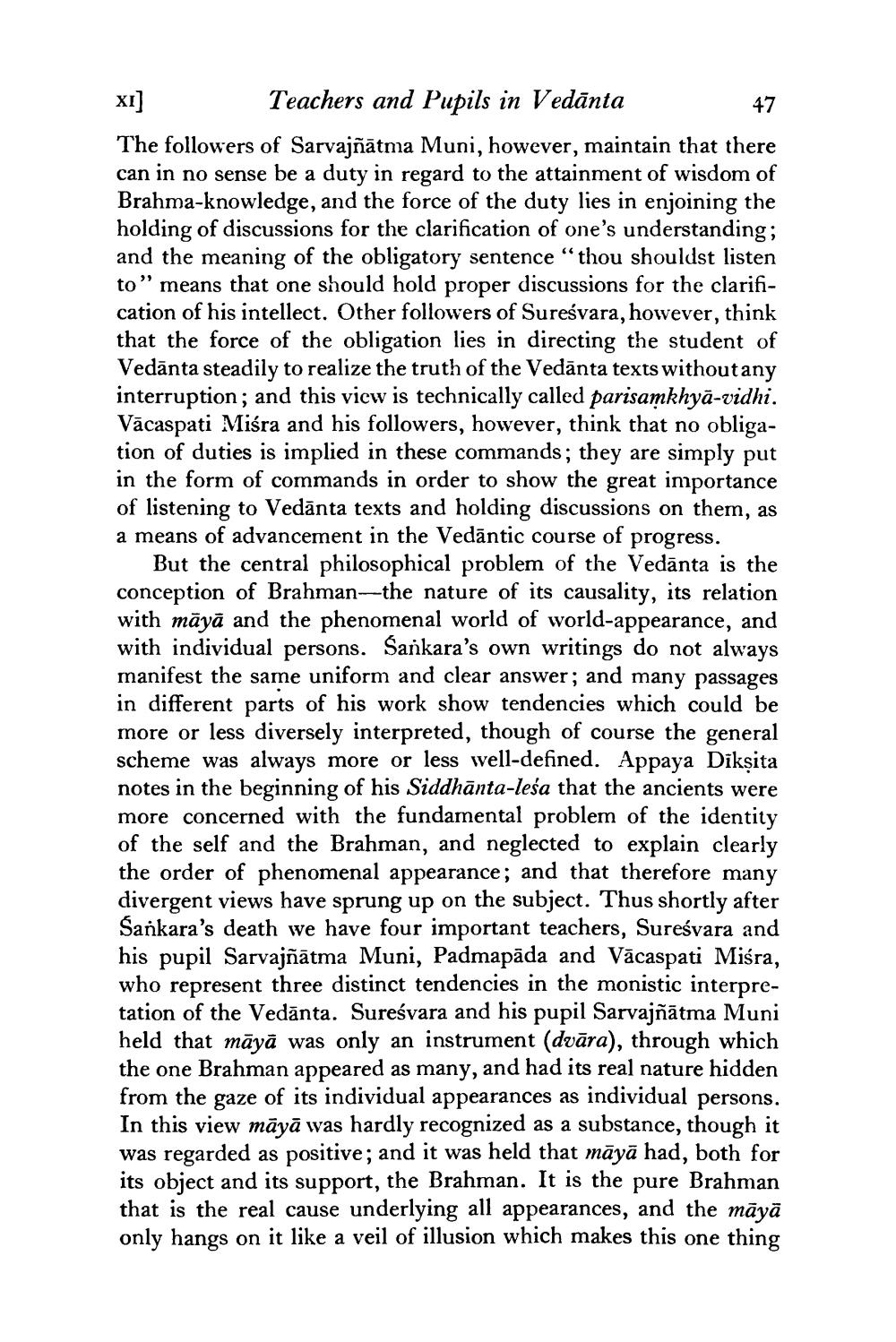________________
47
XI
Teachers and Pupils in Vedānta The followers of Sarvajñātma Muni, however, maintain that there can in no sense be a duty in regard to the attainment of wisdom of Brahma-knowledge, and the force of the duty lies in enjoining the holding of discussions for the clarification of one's understanding; and the meaning of the obligatory sentence "thou shouldst listen to" means that one should hold proper discussions for the clarification of his intellect. Other followers of Sureśvara, however, think that the force of the obligation lies in directing the student of Vedānta steadily to realize the truth of the Vedānta texts withoutany interruption; and this vicw is technically called parisamkhyā-vidhi. Vācaspati Miśra and his followers, however, think that no obligation of duties is implied in these commands; they are simply put in the form of commands in order to show the great importance of listening to Vedānta texts and holding discussions on them, as a means of advancement in the Vedāntic course of progress.
But the central philosophical problem of the Vedānta is the conception of Brahman-the nature of its causality, its relation with māyā and the phenomenal world of world-appearance, and with individual persons. Sankara's own writings do not always manifest the same uniform and clear answer; and many passages in different parts of his work show tendencies which could be more or less diversely interpreted, though of course the general scheme was always more or less well-defined. Appaya Dikṣita notes in the beginning of his Siddhānta-leśa that the ancients were more concerned with the fundamental problem of the identity of the self and the Brahman, and neglected to explain clearly the order of phenomenal appearance; and that therefore many divergent views have sprung up on the subject. Thus shortly after Sankara's death we have four important teachers, Sureśvara and his pupil Sarvajñātma Muni, Padmapāda and Vācaspati Miśra, who represent three distinct tendencies in the monistic interpretation of the Vedānta. Sureśvara and his pupil Sarvajñātma Muni held that māyā was only an instrument (dvāra), through which the one Brahman appeared as many, and had its real nature hidden from the gaze of its individual appearances as individual persons. In this view māyā was hardly recognized as a substance, though it was regarded as positive; and it was held that māyā had, both for its object and its support, the Brahman. It is the pure Brahman that is the real cause underlying all appearances, and the māyā only hangs on it like a veil of illusion which makes this one thing




